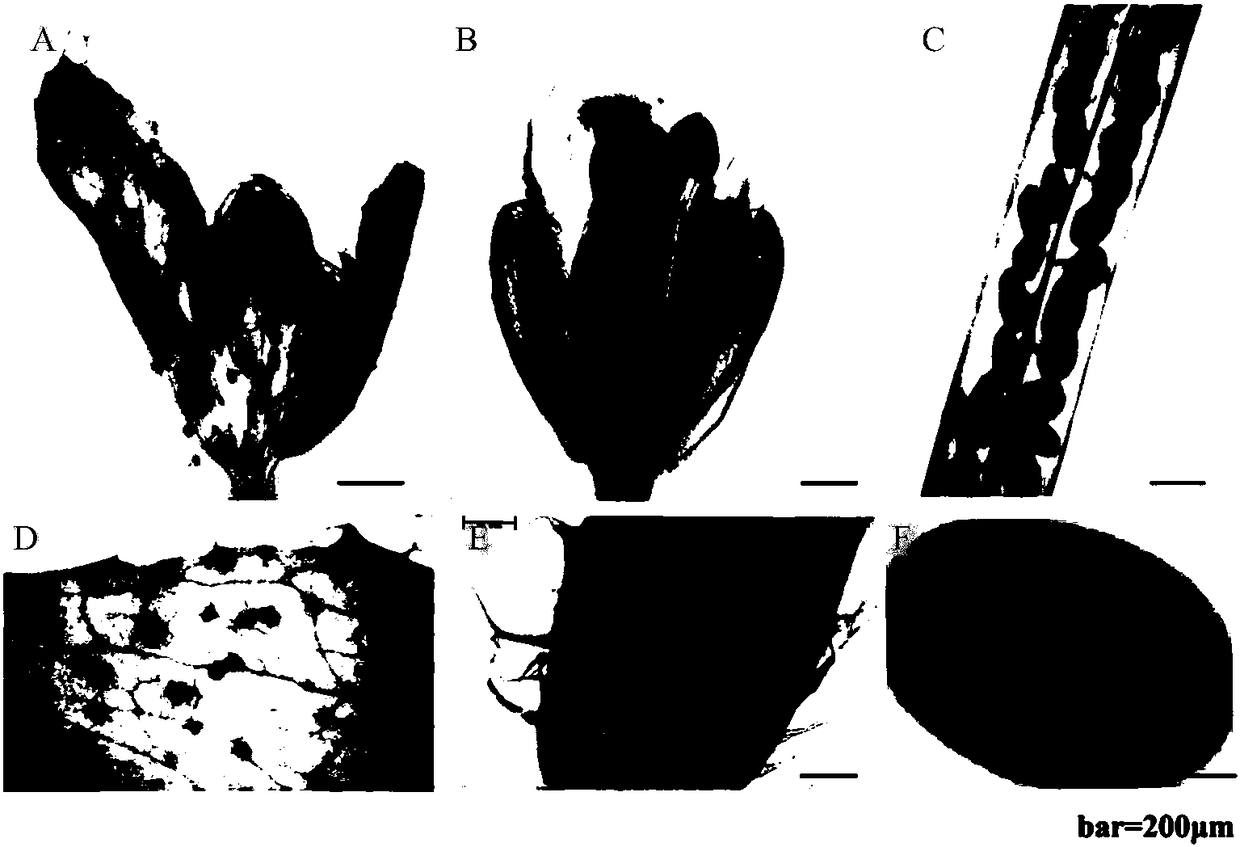Reproductive organ and glandular hair tissue specific promoter GhS and application thereof
A promoter and biological technology, applied in the application field of plant genetic improvement, can solve problems such as less research and more in-depth research
- Summary
- Abstract
- Description
- Claims
- Application Information
AI Technical Summary
Problems solved by technology
Method used
Image
Examples
Embodiment 1
[0042] Example 1 Cloning of seed coat and fibrous tissue-specific promoter GhS
[0043] (1) DNA Extraction of Upland Cotton (Gossypium hirsutum)
[0044] 1) Take fresh cotton leaves and put them in a centrifuge tube with steel balls, freeze them quickly in liquid nitrogen, and process them with a sample rapid grinder at 55Hz for 100 seconds until the leaves are completely broken.
[0045] 2) Add 600 μL of CTAB extract (containing 2% β-mercaptoethanol), mix evenly by inversion, and bathe in a water bath at 65° C. for 30-60 minutes.
[0046] 3) Add an equal volume of chloroform:isoamyl alcohol (24:1), gently invert and mix, let stand for 10 minutes; centrifuge at 12000rpm for 10 minutes at 4°C;
[0047] 4) Transfer the supernatant to a new centrifuge tube, add 2 times the volume of absolute ethanol, mix it upside down, and place it at -20°C for more than 30 minutes;
[0048] 5) Centrifuge at 12,000 rpm for 10 minutes, discard the supernatant; add 700 μL of 75% ethanol, and r...
Embodiment 2
[0058] Embodiment 2: GhS promoter plant expression vector construction
[0059] The strains sequenced correctly in Example 1 were selected to extract plasmids for the construction of plant expression vectors. The above-mentioned pMD18-T recombinant vector plasmid linked to the GhS promoter and the empty pCAMBIA1305 plasmid were subjected to BamI and NcoI double digestion respectively. Digest at 37°C for 15-30 minutes, and perform agarose gel electrophoresis detection on the digested products, recover the GhS promoter fragment digested by the recombinant plasmid and the large vector fragment digested by pCAMBIA1305, and connect them. The connection system is as follows:
[0060]
[0061] Ligate overnight at 16°C, then transform into Escherichia coli DH5α by heat shock method, pick clones for PCR detection, and send positive clones for sequencing verification;
[0062] The completed GhS-pCAMBIA1305 promoter expression vector is shown in figure 1 . In this figure, the GFP...
Embodiment 3
[0063] Example 3: Tissue expression analysis of GUS gene driven by GhS promoter in Arabidopsis
[0064] (1) Genetic transformation of GhS-pCAMBIA1305 vector
[0065] 1) Transformation of Agrobacterium with GhS-pCAMBIA1305 vector
[0066] The strains sequenced correctly in Example 2 were selected, and the plasmids were extracted for subsequent Agrobacterium transformation. The method is similar to transforming E. coli. Take 2 μL of the recombinant plasmid and add it to 100 μL of Agrobacterium GV3101 competent cells, mix gently and let stand on ice for 30 minutes. Immediately after liquid nitrogen treatment for 3 minutes, heat shock at 37°C for 10 minutes, followed by ice bathing for 1 to 3 minutes. Add 800 μL LB non-resistance liquid medium, and incubate on a shaker at 180 rpm at 28°C for 3 to 5 hours. After centrifuging at 4000rpm for 1 minute, discard most of the supernatant, suspend the bacteria and spread evenly on a solid LB kanamycin-resistant plate, incubate at 28°...
PUM
 Login to View More
Login to View More Abstract
Description
Claims
Application Information
 Login to View More
Login to View More - R&D
- Intellectual Property
- Life Sciences
- Materials
- Tech Scout
- Unparalleled Data Quality
- Higher Quality Content
- 60% Fewer Hallucinations
Browse by: Latest US Patents, China's latest patents, Technical Efficacy Thesaurus, Application Domain, Technology Topic, Popular Technical Reports.
© 2025 PatSnap. All rights reserved.Legal|Privacy policy|Modern Slavery Act Transparency Statement|Sitemap|About US| Contact US: help@patsnap.com



